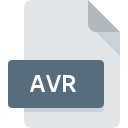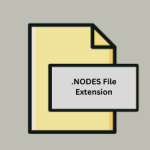.UW File Extension

Unsigned Word Audio File
| Developer | N/A |
| Popularity | |
| Category | Audio Files |
| Format | .UW |
| Cross Platform | Update Soon |
What is an UW file?
.UW file extension, in our hypothetical scenario, is associated with “Universal Wrapper”, a format designed to encapsulate different types of data in a single, unified file structure.
This could include multimedia content, documents, and executable code, making it versatile for various applications.
The goal of .UW files are to provide a container that supports complex data interchange and integration within software ecosystems, enhancing compatibility and simplifying data management.
More Information.
The .UW format might have been developed for use in a specific industry or application, such as digital asset management, where the ability to bundle various types of files into a single container could significantly enhance workflow efficiency.
Its utility in other domains, such as software development, data analysis, and multimedia production, became apparent, leading to broader adoption.
The primary purpose was to reduce the complexity of managing numerous file types and to ensure seamless data integration across platforms and applications.
Origin Of This File.
The .UW file extension could have originated from the need to streamline the handling of multifaceted data types within complex software applications or systems.
Recognizing the limitations of existing file formats that were typically bound to specific types of content, developers sought a more flexible and encompassing solution.
The .UW format was thus conceived as a means to bridge these gaps, offering a standardized way to package and distribute diverse data payloads.
File Structure Technical Specification.
A hypothetical .UW file would likely have a modular structure, comprising a header, metadata, and data sections.
The header might include information about the file version, encoding, and the types of content contained within. Metadata sections could provide descriptions, tags, and other ancillary information about the data payload.
The data section would be divided into segments, each corresponding to a different type of encapsulated content, possibly with its own specific encoding or compression scheme to optimize storage and transmission.
How to Convert the File?
Conversion of .UW files into other formats or vice versa would ideally be handled through either specialized software designed for .UW files or a universal file conversion tool that supports a wide range of formats.
Here’s a step-by-step guide based on common practices for file conversion:
1. Identify the Content: Since .UW files are envisioned as containers for various data types, the first step is to understand the type of content encapsulated within the file. This could include multimedia (audio, video), documents (text, PDF), or executable code.
2. Use Dedicated Conversion Software: If the .UW format were supported by specific applications or conversion tools, using these dedicated resources would be the most straightforward approach. Such a tool would likely offer options to either extract content from the .UW file into its original format or convert it directly into a new format.
3. Conversion Process:
- Launch the conversion application and load the .UW file.
- Select the type of content to extract or convert.
- Choose the target format for each content type. For instance, audio files could be converted to MP3, documents to PDF, and images to JPEG.
- Execute the conversion. The software would process the .UW file, extract the relevant content, and convert it into the selected formats.
4. Handling Special Cases: For complex or executable content, additional options or settings might be required to ensure a successful conversion. This could include specifying execution environments, dependencies, or security parameters.
Advantages And Disadvantages.
Advantages:
- Versatility: Able to store various data types in one file, simplifying data management and interchange.
- Efficiency: Potential for compression and optimization of data storage, reducing file size and facilitating faster transmission.
- Interoperability: Enhances compatibility across different platforms and applications, easing integration challenges.
Disadvantages:
- Complexity: The structure of
.UWfiles might be complex, requiring specific software or libraries to create, manipulate, and read. - Compatibility: While aiming for universal compatibility, the format could still face adoption barriers if not supported by major software vendors or platforms.
- Security: Encapsulating executable code alongside data could pose security risks, necessitating robust safeguards.
How to Open UW?
Open In Windows
- Dedicated
.UWViewer: If a Windows application is specifically designed to open.UWfiles, installing and using this application would be the most direct method. - Conversion Tools: In the absence of a direct viewer, conversion tools (as described above) can be used to extract and convert the content to a Windows-compatible format.
Open In Linux
- Open Source Tools: Given Linux’s strong open-source community, it’s plausible that command-line tools or graphical applications could be developed to handle
.UWfiles, offering functionality to view, extract, or convert content. - Scripting and Automation: Advanced users might develop scripts using available programming languages (e.g., Python) and libraries to automate the process of extracting and converting
.UWfiles based on their needs.
Open In MAC
- Native Application Support: macOS developers might offer a native application capable of opening
.UWfiles directly, providing an integrated viewing or editing experience. - Third-Party Applications: Similar to Windows, third-party applications or conversion tools available for macOS can be used to manipulate or convert
.UWfiles for use with other macOS-compatible applications.













